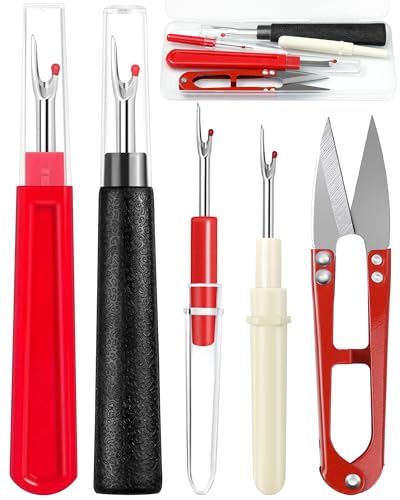As winter rolls in and the snow starts to blanket the mountains, it’s time to think about hitting the slopes. But before you grab your gear, have you considered how to keep your skis safe and stylish? That’s where a fabric ski bag comes in handy. Not only does it protect your precious equipment, but it also makes transporting them a breeze.
Materials Needed
Choosing the right materials is essential for crafting a durable and stylish fabric ski bag. Below are the key components needed for this project.
Fabric Options
- Nylon: Lightweight, water-resistant, and durable; ideal for outdoor use.
- Denim: Sturdy and resistant to wear; offers a stylish look for casual use.
- Canvas: Heavyweight and durable; great for added protection and support.
- Polyester: Water-resistant and available in various colors; combines strength with style.
Tools Required
- Sewing Machine: A reliable machine simplifies the process and ensures even stitching.
- Scissors: Sharp fabric scissors make cutting materials efficient and clean.
- Measuring Tape: Accurate measurements are crucial for a properly fitting bag.
- Pins or Clips: Useful for holding fabric layers together while sewing.
- Thread: Choose a strong, durable thread that matches your fabric color.
- Zipper: A high-quality zipper secures the bag and allows easy access.
Gathering these materials will set the foundation for creating a functional and appealing ski bag tailored to my needs.
Preparation Steps
Preparation is key to making a fabric ski bag that meets personal needs and style. Several essential steps simplify the sewing process and ensure the final product is both functional and durable.
Measuring and Cutting Fabric
Measuring fabric accurately prevents mistakes during sewing. I measure the length of my skis plus an extra 10 inches for seams. Next, I measure the width with an additional 4 inches for a comfortable fit. After that, I cut the fabric according to these measurements, ensuring I maintain a straight edge. Using sharp scissors for clean cuts helps avoid fraying.
I also prepare lining fabric to provide extra protection. The same measurements apply to the lining, so it fits snugly inside the outer fabric. For securing the edges, I recommend using pinking shears or a zigzag stitch on the edges after cutting.
Preparing the Sewing Machine
Preparing the sewing machine is crucial for a smooth sewing experience. I start by ensuring the machine is clean and free of dust. Using a fresh needle suitable for thick fabrics helps maintain sewing quality. I thread the machine with strong, durable thread that matches my fabric color.
Next, I adjust the tension settings for the fabric type, testing on a scrap piece to achieve even stitching. Finally, I set the stitch length to about 3mm for durability, especially in areas that will experience stress, like seams and zippers. This preparation ensures my sewing journey proceeds without unnecessary interruptions.
Sewing Process
The sewing process involves several steps to ensure a functional and stylish fabric ski bag. Attention to detail during each phase is key to achieving a durable product that meets your needs.
Creating the Bag Body
Start by laying the main fabric right side up on a flat surface. Place the lining fabric on top, right side down, aligning the edges. Pin or clip the layers together for stability. Next, sew along three sides, leaving one end open, which allows for easy access to the bag’s interior. Use a ½ inch seam allowance to maintain structure. For added durability, backstitch at the beginning and end of each seam. Once sewn, turn the bag body right side out, pushing out the corners for a clean finish. This method creates a strong base for the ski bag and provides ample room for ski equipment.
Adding Straps and Handles
To add straps or handles, measure and cut two strips of fabric approximately 2 inches wide and 24 inches long. Fold each strip in half lengthwise with the right sides facing. Sew along the open edge, then turn the tubes right side out. Press them flat for a polished look. Determine the attachment point on the bag body, typically along the open end. Pin the handles in place, ensuring they’re secure and evenly spaced. Sew across the top of the bag and down each side of the handle for strength. This process ensures that the straps are robust enough to support the weight of your skis while adding a functional and stylish finish to your ski bag.
Finishing Touches
Finishing touches enhance the functionality and aesthetics of your fabric ski bag. Focus on detailing and design to elevate your project.
Adding Pockets and Compartments
Adding pockets improves organization for your ski accessories. I recommend placing a small pocket on the exterior for quick access to essentials like ski passes or gloves. To create this pocket, cut a piece of fabric measuring 8 inches by 10 inches. Fold the top edge down ½ inch and sew a straight stitch to hem it. Attach the pocket to the bag by aligning it with your preferred location and securing it in place with pins. Sew around the pocket edges, reinforcing corners for durability.
For additional compartments within the bag, consider adding a larger pocket inside. Cut a piece of fabric measuring 12 inches by 15 inches. Fold the sides in by 2 inches and sew to form a sleeve for your goggles or other gear. Position this pocket towards the top of the bag’s lining for accessibility. This method keeps your gear organized and protected during transport.

Finalizing the Stitching
Finalizing the stitching ensures durability and a polished look. I recommend going over all stitched seams with a zigzag stitch or serger to prevent fraying. Check each seam for consistency and make any necessary adjustments to the tension settings for an even finish.
After completing the bag, I suggest adding a decorative top stitch around the opening. This not only reinforces the stitching but also adds a stylish touch to your ski bag. Choose a contrasting thread color for visibility, making it a unique feature of your bag.
Inspect all areas of the ski bag for loose threads, trimming any excess for a clean finish. Remember to give your finished ski bag a gentle press with an iron, ensuring it looks crisp and ready for the slopes.
Conclusion
Creating your own fabric ski bag is not just a practical project but also a fun way to express your style. I love how a handmade bag adds a personal touch to my ski gear while keeping everything safe and organized.
With the right materials and a bit of patience you can craft a bag that reflects your personality and meets your needs. Remember to take your time with each step and enjoy the process.
« Discover How to Sew a Fabric Toy Car Track: The Ultimate DIY Project Your Kids Will Love
Unlock the Secret to Perfect Projects: What Is a Box Corner and How to Sew It Like a Pro »
Once you hit the slopes with your custom ski bag you’ll appreciate the effort you put into making it. Happy sewing and even happier skiing!

















